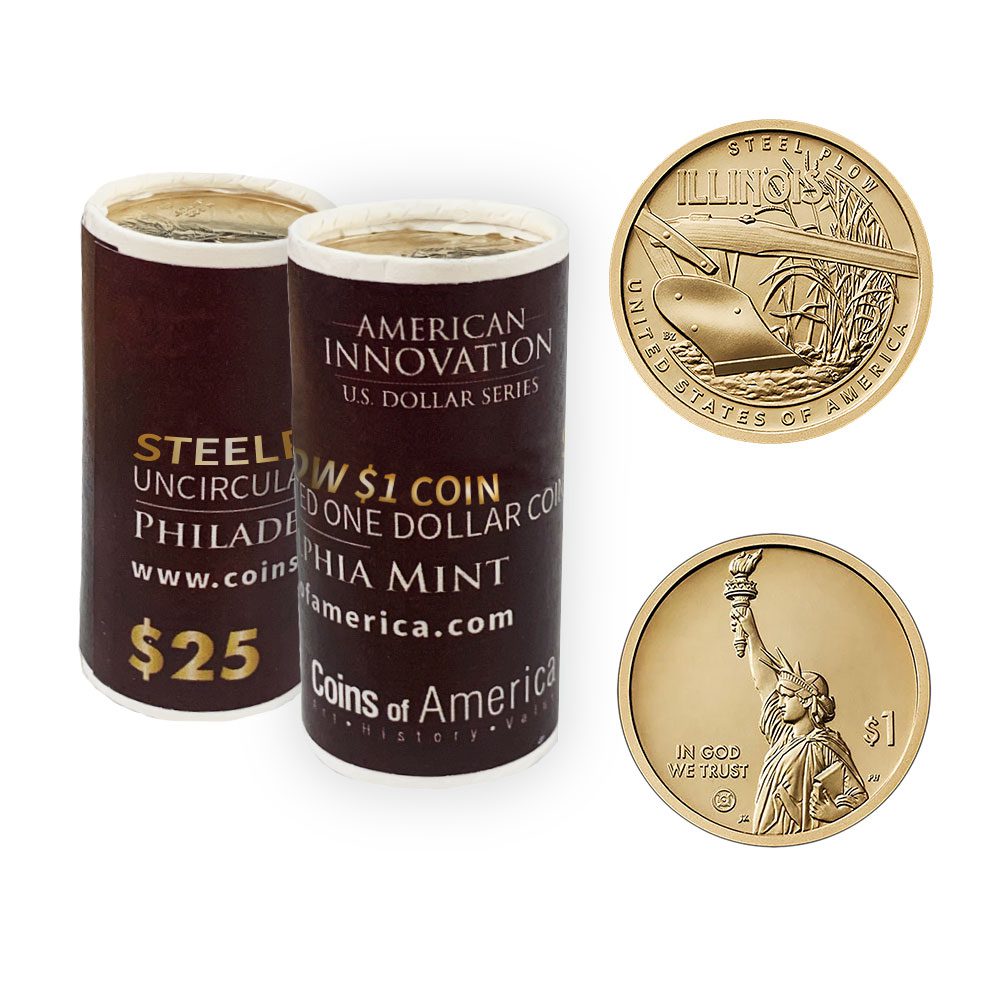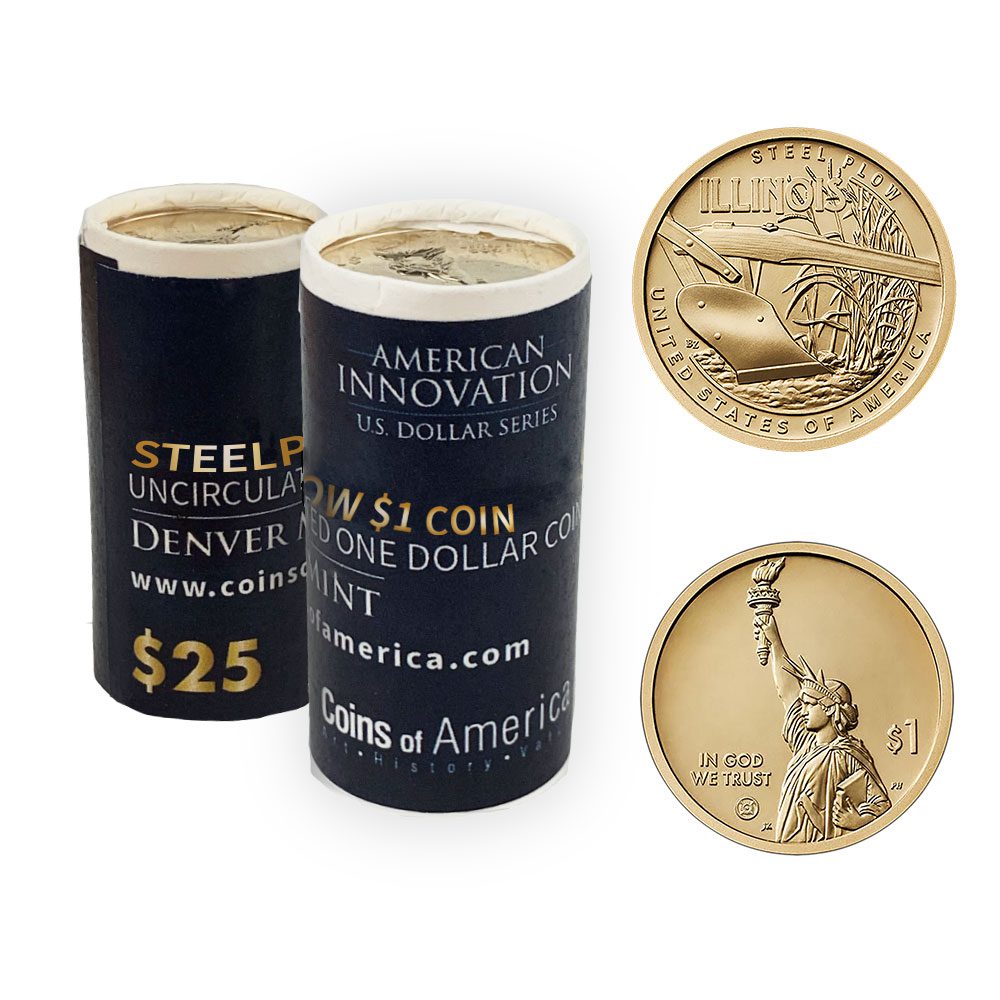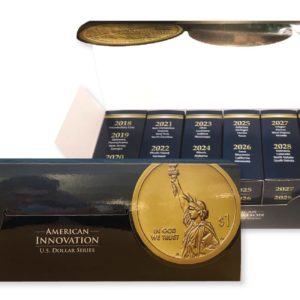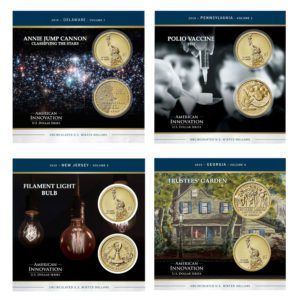Illinois Steel Plow
Price range: $3.49 through $49.95
Illinois Steel Plow- The reverse (tails) design features a large steel plow blade affixed to a right-handed beam and braces. Behind the plow is a stand of Big Bluestem prairie grass and a field of soil below.
The edge-incused inscriptions are “2024,” mint mark, and “E PLURIBUS UNUM.”
Please select the Mint and the Packaging from the options below.
Product Description
2024 Illinois American Innovation $1 Coin – Honoring the Steel Plow and Agricultural Advancement
The 2024 American Innovation $1 Coin representing Illinois celebrates one of the most transformative inventions in American agricultural history: the steel plow. This groundbreaking tool revolutionized farming in the Midwestern United States during the 1800s and marked the beginning of the industrial age of agriculture. The coin honors the ingenuity and innovation that helped shape the nation’s farming economy and expand settlement across the heartland.
In the early 19th century, as Americans migrated westward from the East Coast, they encountered vast prairie grasslands in the Midwest. These rich but dense soils posed a significant challenge to traditional farming methods. The wooden plows commonly used in the East, which worked well in sandy soil, were ineffective in the thick sod of the prairies. They would clog, break, or fail to penetrate the tough terrain, making farming nearly impossible.
The solution came from John Lane, a blacksmith in Homer Township, Illinois, who crafted a plow blade from a repurposed sawmill blade. He polished the steel so that soil wouldn’t stick to it, allowing the blade to cut cleanly through the prairie sod. After successful field testing, Lane began producing the plow on his farm and later expanded operations to Lockport, Illinois. His steel plow was a commercial success by the 1850s, though Lane never patented his invention.
Lane was one of several innovators working on plow design during this period. The most widely recognized name in steel plow development is John Deere, who also created a steel plow from a sawmill blade in 1837 in Grand Detour, Illinois. Unlike Lane, Deere focused on mass production, establishing a scalable manufacturing process that allowed plows to be produced efficiently and distributed widely. This industrial approach helped Deere’s version of the steel plow become the dominant model and laid the foundation for the John Deere Company, a global leader in agricultural equipment.
The steel plow’s impact was profound. It enabled farmers to cultivate the fertile lands of the Midwest, leading to a surge in agricultural productivity and the expansion of rural communities. The invention also contributed to the rise of mechanized farming, setting the stage for future innovations in agricultural technology.
Design Details of the 2024 Illinois American Innovation $1 Coin
The obverse (heads) of the coin features a striking profile of the Statue of Liberty, symbolizing freedom, opportunity, and innovation. This side also includes a privy mark in the shape of a stylized gear, representing the spirit of industry and technological advancement that defines the American Innovation coin series.
The reverse (tails) design showcases a large steel plow blade affixed to a right-handed beam and braces, capturing the essence of the tool that transformed farming. Behind the plow is a stand of Big Bluestem prairie grass, native to the Midwest, and a field of soil below, symbolizing the fertile land that the steel plow helped unlock for cultivation.
The edge-incused inscriptions include:
- “2024” – the year of minting
- Mint mark – indicating the production facility
- “E PLURIBUS UNUM” – Latin for “Out of many, one,” a motto of unity
Why the Illinois Innovation Coin Matters
The 2024 Illinois American Innovation $1 Coin is more than a commemorative piece—it’s a tribute to the ingenuity that helped build America’s agricultural foundation. The steel plow represents a turning point in farming history, enabling settlers to thrive in the Midwest and fueling the nation’s growth.
Whether you’re a coin collector, a history enthusiast, or someone passionate about agricultural innovation, this coin is a meaningful addition to any collection. It honors the legacy of inventors like John Lane and John Deere, whose contributions continue to shape modern farming practices.
You must be logged in to post a review.








Reviews